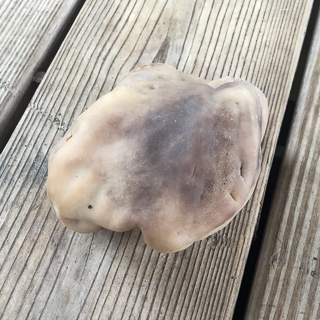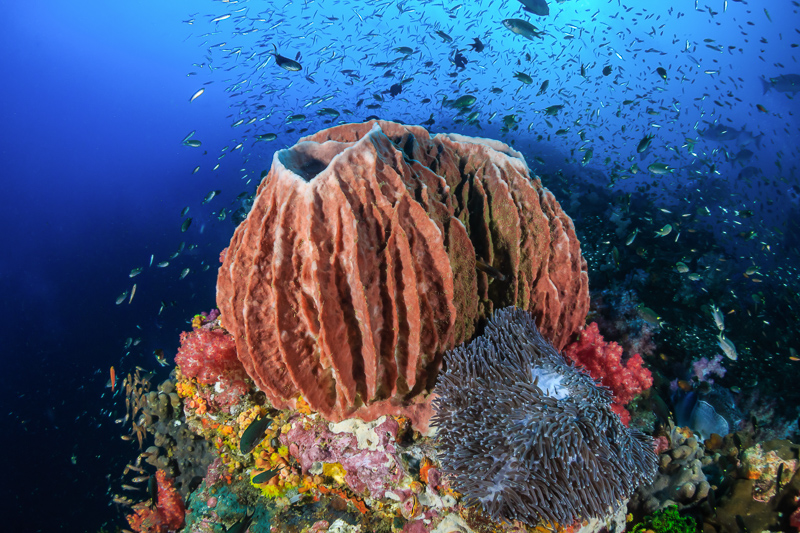Ask a Naturalist: Sponge Blog
For immediate release ‐ December 02, 2020
Ask a Naturalist
Contact: Jessica Wackes, 919.707.9850. Images available upon request

What image comes to mind when you hear the word “sponge”? A brightly-colored rectangle used to clean dirty dishes? An adorable, yellow cube-shaped, pants-wearing cartoon character? A beautiful, living animal found attached to a tropical coral reef? Frankly, none of those options popped into my head when I saw the greyish blob in the photos submitted to Ask a Naturalist (right and below). Along with the photos came a description; the object was cold to the touch, leathery or rubbery feeling and had a bad odor. The location where the blob was found, North Topsail Beach, NC, provided a helpful clue. In order to solve this mystery, I turned to marine biologist and Collections Manager of Non-Molluscan Invertebrates, Megan McCuller.

“This is a sponge,” Megan said, “a member of the Phylum Porifera.” She tentatively identified it as belonging to either the genus Erylus or Geodia, both members of class Demospongiae, the largest and most diverse group of sponges. A more precise identification isn’t possible using only a photo of the dried-up, sun-bleached sponge. However, knowing it is a demosponge means it belongs to the same economically important group of sea sponges harvested for personal and household cleaning use.

What are sponges exactly? They are multicellular animals without true tissues and organs. They are aquatic invertebrates, and sessile, meaning they attach to underwater surfaces and do not move from their location. A sponge is like a water pump, moving large quantities of water through its porous body using cells containing tiny hairlike flagella. Water containing oxygen, microscopic food and nutrients enters the sponge while carbon dioxide plus waste exits. Although most sponges live in marine or ocean habitats, there are some species that can only exist in freshwater. The number of described sponge species is estimated to be 6,000 and they vary greatly in color, shape and size. Many are incredibly beautiful such as the barrel sponge shown in the photo above. Because sponges filter water, provide habitat and food for other organisms, they are critical residents of the same coral reef ecosystems being impacted right now by climate change.
I’ll be honest, I hadn’t thought much about sponges until we got this Ask a Naturalist question. But the next time I wash dishes or see SpongeBob, I will remember what a vital role real sponges play in the watery ecosystems they inhabit.
Do you have a question about a plant, animal or natural object? Be sure to Ask a Naturalist!
by Cindy Lincoln, Naturalist Center Coordinator

